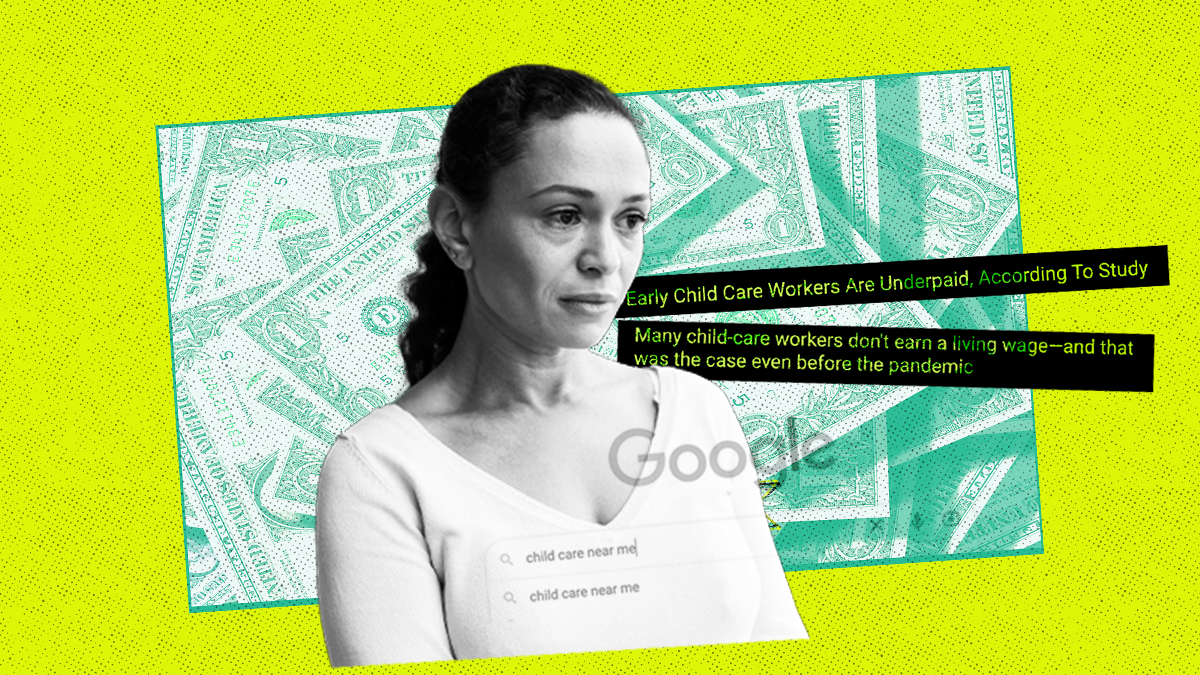Abortion rights, women of color, and LGBTQIA+ people are under attack. Pledge to join us in fighting for gender justice.
Trump’s Child Care Plan Gives the Most Help to Those Who Need it Least

 During the 2016 presidential campaign, both candidates spoke to the need to increase support for child care. Just this week, in his address to a joint session of Congress, President Trump stated: “My administration wants to work with members in both parties to make child care accessible and affordable.” The child care plan issued by the Trump campaign in the fall focused on tax solutions. NWLC and the Tax Policy Center have each recently released an analysis of this plan (since neither the Administration nor any Member of Congress has released anything more detailed since the inauguration). These analyses conclude that overall, the Trump child care plan would give the most help to those who need it the least. It also would not improve child care quality, including by increasing wages for providers or increase the supply of child care.
During the 2016 presidential campaign, both candidates spoke to the need to increase support for child care. Just this week, in his address to a joint session of Congress, President Trump stated: “My administration wants to work with members in both parties to make child care accessible and affordable.” The child care plan issued by the Trump campaign in the fall focused on tax solutions. NWLC and the Tax Policy Center have each recently released an analysis of this plan (since neither the Administration nor any Member of Congress has released anything more detailed since the inauguration). These analyses conclude that overall, the Trump child care plan would give the most help to those who need it the least. It also would not improve child care quality, including by increasing wages for providers or increase the supply of child care.
The Trump child care proposal has three main components:
- Tax Deduction: Married couples filing jointly with income of $500,000 or less, and single individuals with income of $250,000 or less, would be able to deduct child care expenses for up to four children under the age of 13. The expenses would be capped at the average cost of child care in the state, for the age of the children. Expenses are defined broadly to include “enrichment activities” as well as uncompensated care provided to families by a “stay-at-home parent” or grandparent.
- Child Care Spending Rebate: Some families with no tax liability — married couples filing jointly with earnings of $62,400 or less and single individuals with earnings of $31,200 or less — could receive “a child care spending rebate” through the Earned Income Tax Credit (EITC) for remaining eligible child care expenses. The rebate would be worth 7.65 percent of eligible child care expenses, capped at the value of half the payroll taxes paid by the tax filer (for a married couple, of half the payroll taxes paid by the lower-earning spouse).
- Dependent Care Savings Accounts (DCSA): Families at any income level could open Dependent Care Savings Accounts to pay for current or future care expenses for children under 18 and elderly dependents. Immediate family members and employers of the account holder could contribute a total of up to $2,000 per year, per account. For some “lower-income” families, the government would provide a match of up to 50 percent for up to $1,000 in contributions. Care expenses are defined broadly to include private school tuition, higher education expenses, and enrichment activities. Contributions to, and appreciation on, the accounts would not be subject to tax, and it appears that funds in the accounts would not be subject to tax even when spent.
The three components of the Trump proposal would be in addition to existing federal child care programs, including the Child and Dependent Care Tax Credit.
The Trump proposal gives more tax breaks to high-income families than middle- and low-income families and doesn’t foster better child care options for families.
- Tax deductions overwhelmingly benefit higher-income families because they are more valuable the higher the family’s income (and thus tax bracket).
- Millions of families in need of child care have incomes that are too low to have any federal tax liability at all and thus would not benefit from a tax deduction.
- The proposed “child care rebate” would provide very little assistance to low-income families. The rebate would be worth, at most, only 7.65 percent of expenses, while the deduction would be worth between 12 and 33 percent of expenses under the Trump proposal’s tax rates.
- The proposed Dependent Care Savings Accounts would also provide more benefit to higher-income than lower- and middle-income families because they are more valuable the higher the family’s income, and because higher-income families are more likely to have the resources to contribute to such accounts and allow those contributions to grow over time.
The Tax Policy Center’s analysis concluded that 70 percent of the total tax benefits of the proposed deduction and rebate would go to families with income above $100,000. And although TPC’s estimates did not include the savings accounts, the paper stated that “this component would likely increase the tilt of Trump’s child care proposals towards higher-income families.”
TPC’s analysis estimated that fewer than 10 percent of families with income between $10,000 and $40,000 would qualify for some benefit under this proposal. And TPC estimated that low- and moderate-income families would receive very little in average annual benefits from the deduction and rebate: just $10 for families with income between $10,000 and $30,000, about $25 for families with income between $30,000 and $40,000, about $75 for families with income between $40,000 and $50,000, and $150 for families with income between $50,000 and $75,000; in contrast, families with income between $200,000 and $500,000 would receive average annual benefits of $460. TPC’s analysis concluded that “the president’s proposals would not meaningfully change lower-income families’ ability to purchase higher-quality care.” And the Trump proposal would do nothing to increase compensation for the underpaid child care workforce, improve the quality of child care, or increase the supply of child care that is most difficult for families to access — such as care for infants and toddlers or care in rural and low-income communities.
There are better options to help families obtain the child care they need and to help ensure that the early educators who care for and teach their children are well-qualified and well-compensated. Policymakers should significantly increase child care funding, including through improvements to the existing Child and Dependent Care Tax Credit, which is designed to help families with the cost of child care they need to go to work. Specifically:
- Increase federal funding for the Child Care and Development Block Grant (CCDBG) so that child care assistance is available to all eligible low- and moderate-income families who need it.
- Increase federal funding for CCDBG to enable states to raise payment rates for child care providers serving families receiving child care assistance, so that the base rate is at least equal to the federally recommended level, with higher rates for higher-quality care.
- Increase federal funding for CCDBG to provide states with the resources needed to implement the important reforms in the program’s 2014 reauthorization.
- Make the Child and Dependent Care Tax Credit (CDCTC) refundable so that it is available to more low- and middle-income families, increase the CDCTC’s sliding scale so that it provides more assistance to middle-income families, and raise the expense limits so that it covers a greater proportion of families’ child care costs




